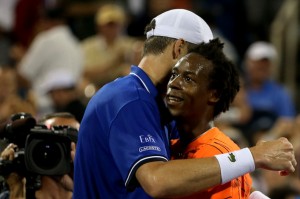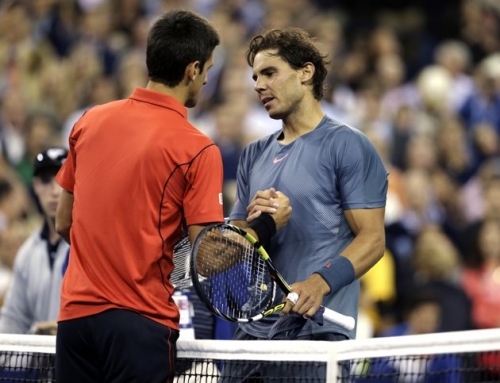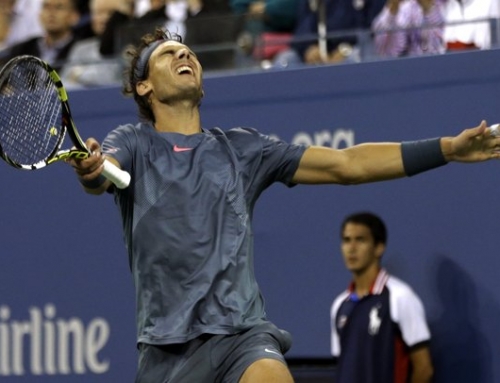 Jerry Seinfeld, the American comedian, said fans of a sport, say American football, were for a uniform. He pointed out that if a player was playing for your team, you supported the player. If he was playing for some other team, you did not support him.
Jerry Seinfeld, the American comedian, said fans of a sport, say American football, were for a uniform. He pointed out that if a player was playing for your team, you supported the player. If he was playing for some other team, you did not support him.
Team sports engender an unusual kind of loyalty. In the US, that loyalty is due to hometown or home state loyalty. Your local team is embodies your hometown. They represent you. Thus, team players are representing you.
When Lebron James, American basketball player, who grew up in Ohio then played for the Cleveland Cavaliers, an Ohio pro basketball team, made “the decision” to take his talents to South Florida so he could surround himself with a better supporting cast, Cleveland fans were irate. Lebron had betrayed them. He was no longer representing good Ohioan folk. He had become the enemy.
Team dynamics are so important that Billie Jean King felt that what tennis needed was a team atmosphere. Of course, it’s difficult to pull this off because most top pros aren’t interested. The entire World Team Tennis season lasts about 3 weeks, placed after Wimbledon so it doesn’t interfere with the possibility, however scant, that a pro like Federer or Nadal might choose to play a match or two. Thus, players like Bobby Reynolds, whose lowly ranking would generally not regard a second look, might have a few local fans that cheer.
Tennis, by and large, has never been this way. It’s been a sport of individuals. It’s been a sport of personality and style of play. And fans have generally looked beyond their national borders to find the players they like.
Ask the top players who their idols were growing up, and you see that many picked idols that weren’t from their nation. Thus, Roger Federer was a Sampras fan. Andy Murray was an Agassi fan. Lleyton Hewitt idolized Mats Wilander. And Wilander? Was Borg his idol? No, it was the fiery Jimmy Connors.
Americans who watched tennis in the 1970s and 1980s often preferred the icy Bjorn Borg to their home grown Connors or McEnroe who were the bad boys of tennis, known for berating chair umpires as the “pits of the earth” or even an “abortion”. Fans were ashamed that these ugly Americans represented them, and were more than happy to support a tennis pro with rock star looks, Bjorn Borg.
Even modern day fans have often chose not to support Roddick or Fish because they, unlike the classy Roger Federer, would yell at chair umpires, asking them to overrule when they hadn’t or to shut up when they had. American fans might even support Rafa because, you know, he’s humble, hard-working, and yes, he wins.
This seemingly anti-patriotic stance isn’t purely an American phenomenon. Cross the pond to Great Britain, and UK fans found themselves evenly divided in the 2012 Wimbledon final between Federer and Murray. Murray was trying to be the first Brit to win Wimbledon since Fred Perry. Even Fred Perry was not so idolized in his day. He was not the upper-class posh that the well-to-do of London society preferred.
And Murray wasn’t Tim Henman, nicknamed Gentleman Tim for his good manners. Murray was considered dull, a bit too angry, a player that couldn’t deliver the goods when it mattered, unlike his Swiss counterpart who exudes classiness that some Brits prefer.
And so it was, last night, after two and a half sets of play, the night crowd at Louis Armstrong broke out in cheers of “Monfils, Monfils, Monfils”, and some, among the ESPN cognoscenti felt that it was distinctly unpatriotic for the locals to support anyone but Isner.
Much of this attitude stems from an old-fashioned American ideal: the great American melting pot. Many have immigrated to these shores from all over. The Chinese, the Irish, the Italians, the East Europeans, the Chinese (again), the Koreans, the Japanese, the Indians. Those who come to these shores still have some loyalty to their home country, but honestly, it’s mostly about, in the words of Thomas Friedman, the world becoming flat.
Think of who we consider “American”. Suppose there was a match between Rajeev Ram and Somdev Devvarman. In case you’re unfamiliar with either, Ram’s the one that was born in the US. Devvarman was born in India. But Devvarman was three time finalist in the NCAA Division 1 men’s tennis tournament winning the title twice. And who did he beat to win his first title?
John Isner.
UVA fans may be forgiven if their allegiance likes with a fellow Hoos rather than a Bulldog of Georgia.
And Georgia? There was a two-time NCAA winner from Georgia around 20 years ago. His name? Mikael Pernfors. Of Sweden. Indeed, tennis in the US has become so international that frequently, half the participants in these events were not born in the United States.
But back to Ram and Devvarman. Should a fan be watching this match, and not be drawn due to their Indian heritage, would they know who to support? Ram complained that fans preferred supporting non-Americans over Americans, and he couldn’t understand why.
Hmm, let’s look at the list of Americans: Rajeev Ram, Alex Kuznetsov, Denis Kudla, Tim Smyczek. Then, there are the Americans that were Americans for a little while, but no longer. Alex Bogomolov, Jr., son of a Russian coach (not to be confused with Alex Dolgopolov, Jr., son of a Ukrainian coach) came to the US, trained in the USTA system, received funding and support. What happened to him?
He had a nice victory over one downbeat Andy Murray, and this spurned him on to have the best year of his career, and he decided he was Russian after all.
How about Jesse Levine? He had a brother that needed medical attention years ago, so the family moved to the US from Canada so he could get the best medical treatment. He toiled on the tour for years, but just as Canadian tennis was looking up with Milos Raonic’s rise to the top, Levine decided he was Canadian, once again.
Or how about Canada? Raonic was born in Montenegro in former Yugoslavia, but his parents immigrated to Canada. US, it seems, isn’t the only melting pot. Vasek Pospisil? He’s actually born in Canada, but his parents are Czech. Filip Peliwo? Born in Canada, but to parents of Polish descent. Daniel Nestor? The stalwart doubles player? Sounds Canadian enough. Born in Serbia.
The British, so starved for winners, that they have green-lighted many a citizenship request if it meant a chance at an Olympic medal, once entertained the idea of convincing a very young Novak Djokovic to become a British citizen. Didn’t happen, but still, imagine that Davis Cup team.
Dustin Brown, of Jamaica? He was given funding by Germany, and now represents Germany. The whole of the Kazakh team are imports from Russia because the Kazakh president loves tennis and the country has money to support players.
And, so when the crowd cheers for Monfils, it’s as much about who Monfils is, as a player. Even American fans wish their players weren’t so much about the big serve. They want a player that’s entertaining like Monfils. They want a player that is elegant like Roger Federer.
To Isner’s credit, when he finally did win the match (to the cheers of “USA, USA” at match point), he understood the appeal of Monfils and didn’t begrudge the crowd its support. This North Carolinian, who never thought he’d be a pro player, who never thought he’d be in the longest match playing, yes, a Frenchman, and then wearing Lacoste clothing, clothing made by a French company named after famed Rene Lacoste (Andy Roddick played with a French made racquet, Babolat, wore French clothing, and had a French coach when he was growing up). Isner grew up in the southern US, but his tennis travels have allowed him to see the world, and become more international in the process.
And, Monfils is pretty much the Usain Bolt of men’s tennis. It’s really hard to dislike the guy, unless you expect him to win, then it’s aggravating (witness the match between Monfils and Fognini when Fognini was up 5-0 in the third set, then Monfils managed to break back several times to push it to a tiebreak, which he promptly lost). Americans practically consider him American because they recognize his star qualities.
In the end, Isner persevered through the cheers, and got the win. He’ll face Kohlschreiber next. He’s the man that beat him last year at the US Open. Fans will undoubtedly support Isner, if only because Kohlschreiber doesn’t roll off the tongue as nicely as Monfils.
And Rajeev Ram? He’s still in the tournament. As an American, you can still cheer him on.





![[US Open Men’s Final] Can Djokovic beat Nadal in the finals?](https://www.essentialtennis.com/wp-content/uploads/2013/09/20130909djokovic-500x383.jpg)
![[US Open, Semis] Djokovic and Nadal to play US Open final once again](https://www.essentialtennis.com/wp-content/uploads/2013/09/20130907nadal-500x383.jpg)
![[US Open, Day 11, QF] Wawrinka upsets Murray in straight sets to make first Slam semi](https://www.essentialtennis.com/wp-content/uploads/2013/09/20130906wawa-500x383.jpg)